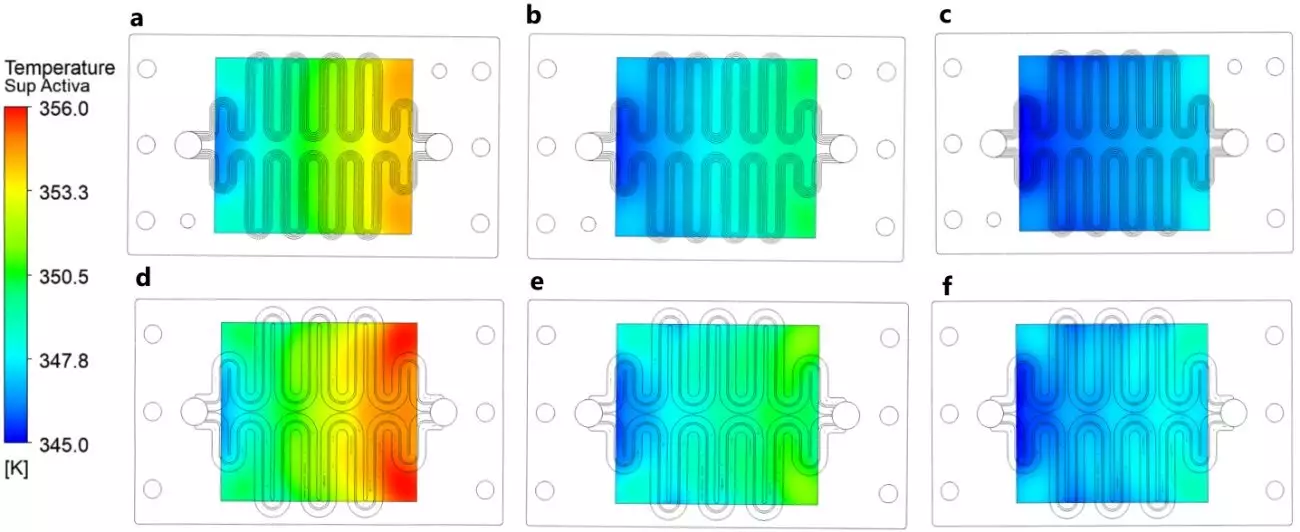The increasing emphasis on clean energy technologies has ushered in the necessity for efficient polymer electrolyte membrane (PEM) fuel cells. However, the performance and longevity of these cells heavily depend on effective cooling mechanisms. A recent collaborative research effort between the University of Seville, AICIA, and the Harbin Institute of Technology has revealed critical insights regarding the cooling processes within PEM fuel cell stacks. By delving into the heat transfer dynamics between serpentine-type cooling channels and the temperature gradients in the membrane, this study pushes the boundaries of existing knowledge.
Methodological Approach to Understanding Heat Transfer
Fundamental to the study was the use of computational fluid dynamics (CFD) simulations, which provided a virtual environment to test various parameters affecting the cooling systems of PEM fuel cells. The analysis primarily focused on a cell characterized by a 100 cm² active area utilizing serpentine cooling channels. The researchers systematically varied factors such as coolant type, mass flow rate, thermal contact resistance, bipolar plate materials, and the geometrical design of the cooling channels to assess their impact on the system’s overall performance. This multifaceted approach emphasizes the complexity of heat transfer within fuel cell stacks, which requires a nuanced understanding of thermal dynamics to improve operational efficacy.
Key Findings and Implications for Fuel Cell Technology
One of the striking conclusions drawn from this research is the significant influence of coolant mass flow and the thermal conductivity of bipolar plates on the refrigeration capability of PEM fuel cells. The relationship between these variables and temperature gradients in the membrane is pivotal, as excessive heat can lead to pronounced degradation, ultimately jeopardizing the functional integrity of the membrane. Such insights underscore the necessity of integrating advanced cooling strategies not only in design but also in operational protocols for PEM fuel cells.
The study also brought forth a novel correlation for the Nusselt number, which serves as a crucial factor in determining heat transfer performance across a broad spectrum of operational conditions. This correlation is especially valuable for engineers and researchers as it can simplify the design process for cooling systems, allowing preemptive evaluations of potential degradation risks in various configurations.
As the demand for sustainable energy solutions continues to grow, advancements such as those reported in this study are vital in enhancing the practicality and reliability of PEM fuel cells. By improving our grasp of cooling mechanisms, this research contributes significantly to the longevity and efficiency of fuel cell stacks, opening avenues for future innovations in fuel cell technology. Ultimately, the successful application of these findings could foster the development of PEM systems that are not only efficient but also resilient, propelling us closer to realizing the potential of clean energy sources in a rapidly evolving energy landscape.


Leave a Reply